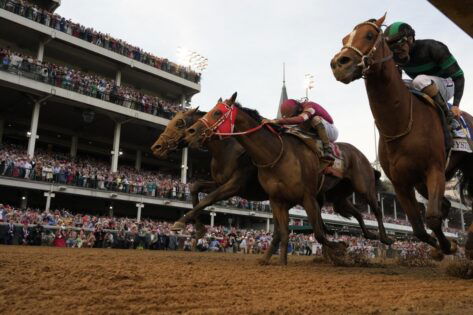

The 151-year-old Kentucky Derby has many interesting facets, rituals, routines, and superstitions to it, and one of these has to do with the post number. The gate from which the horse races, something that is assigned randomly based on a blind draw, seems to play a significant part in the racing outcomes, with a change in post number altering the winning odds for a horse!
Watch What’s Trending Now!
Now, whether it is just sheer luck or a subtle altering in wind speed and friction at inner posts, where (barring post #1, where the last win occurred in 1986) horses seem to perform better in general vs. the outer posts, we know that there is a tendency for horses to perform better when starting from certain post numbers and, likewise, a tendency for them to perform badly at others.
ADVERTISEMENT

For example, posts 5 and 20 have a 10.5% win percentage; however, in last year’s races, they didn’t show much promise, both failing to produce a top 5 horse. Always Dreaming was the last winner at post number 5, and that was in 2017, while post 20 had Rich Strike bag the gold in 2022. Post number 10 is not too bad either, with a 10.2% win percentage; however, the last winner was Giacomo in 2005. The 2024 winner, Mystik Dan, raced out of post 3 last year, which only has a 6.3% win percentage. And, as mentioned earlier, post 1, despite its 8.4% win percentage, only had its last winner, Ferdinand, in 1986. There’s a post worse than #1 though, and that’s #17, which has a 0.0% win percentage with no horse ever winning when racing from this post. This is the only post in the derby that’s never had a single winner!
ADVERTISEMENT
#1, #5 and #17 are posts from the Kentucky Derby that stand out for their consistent luck, both bad and good
#1, based on all the performance stats, should be a good post to race from, and its winning percentage isn’t bad; 8.4%, considering the last one was in 1986, means that there were probably a significant number of wins from this track before that. So, what’s changed? It’s probably just luck, which is why this track demonstrates the most number of swings in terms of winning probability every year. 1986 was long enough ago that #1 can have another winner.
ADVERTISEMENT
#5 and #20 are an interesting conundrum in this group. An inner track vs. the outermost, how does it all work? Since the gate’s 1930 debut, posts 5 and 20 share the highest win rate (10.5%), with post 5 boasting ten winners, eight seconds, and at least one top-five finisher each year from 2012–2019, while post 20 has produced two winners from just 19 starters. However, last year neither post produced anything in the top 5.
And then we have #17, which, in the 151 years of the Kentucky Derby taking place, has never once produced a winner. This is definitely not the most sought-after post; however, this year, given all things go well weather-wise, the three-year-old colt, Chunk of Gold, looks to be set to race from this spot. Chunk of Gold is a promising competitor who finished second consecutively in the Risen Star and the Louisiana Derby. So he looks poised to break the post-17 drought; if it does happen, that’ll be a whole new chapter in the story of the Kentucky Derby!
ADVERTISEMENT
ADVERTISEMENT
ADVERTISEMENT

